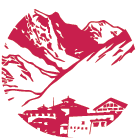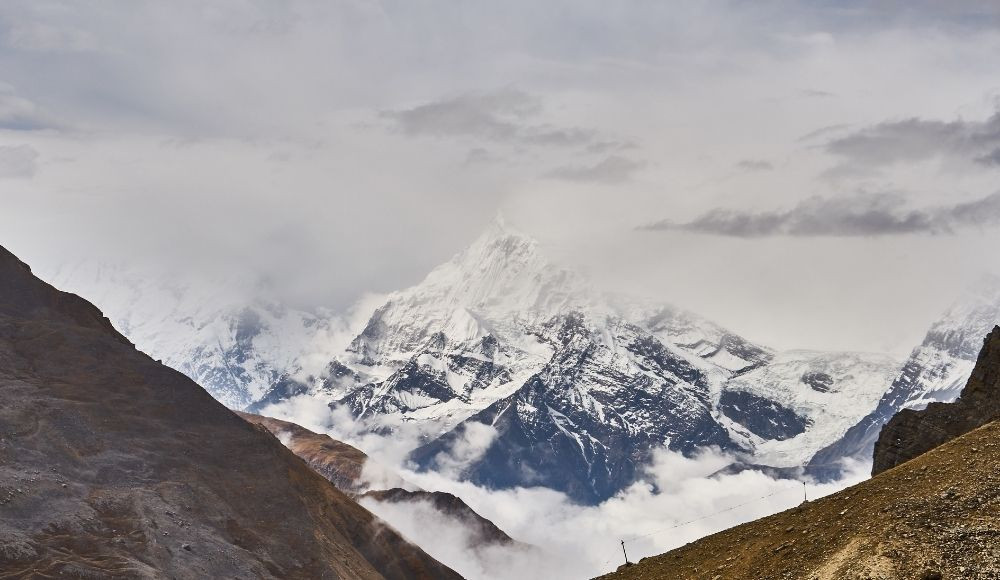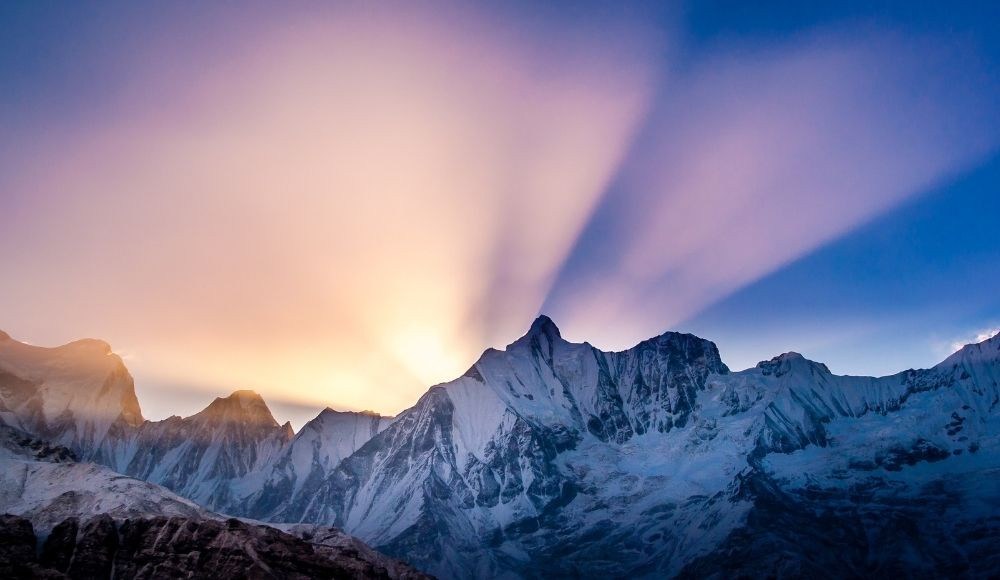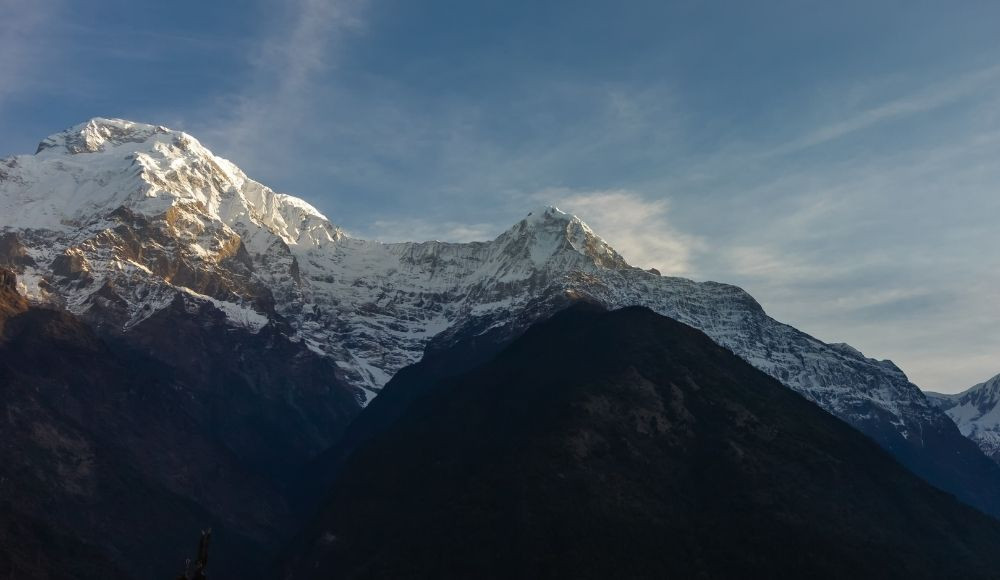Annapurna Two Passes Trek
Trip Facts
Trip Highlights
- Enjoy two scenic valleys – Manang and Jomsom- during the trek.
- Exploring the Holy Muktinath temple of Nepal.
- Explore the remote trekking destination of Nar Valley.
- Trek to ancient villages with cultures that are centuries old.
- Walk along the lush rhododendron and oak forests of ACAP.
- Crossing the Kangla Pass and Thorong La Pass - The Highest Passes of Nepal.
Trip Overview
In this Annapurna two-pass trek, claim victory over Kang-La Pass (5,320m) and Thorong-La Pass (5,416m). Trekking in the restricted areas of Nepal such as Nar Phu valley is one of the best parts of the trek. Although the trails are much less developed and with only a few tea houses and lodges that make it difficult for larger groups. But this trekking trail is one of the best trails in the Annapurna region to witness the authentic and untouched culture and mind-boggling landscapes. The trail is filled with beautiful yet brutal trails. Over the hidden valley, you will see small villages with traditional houses and a few new architectures with basic amenities.
In addition to the breathtaking landscape, you will have the opportunity to visit a multitude of ancient Gompas and monasteries that boast a rich history spanning centuries, each adorned with unique and intricate designs. During the trek, you will encounter several areas abundant with agricultural lands, where seasonal crops thrive and domesticated animals peacefully graze. Animals like yaks and horses can be found in arid regions. You will be captivated by the breathtaking view of the unnamed peaks. The arid trail will guide you to some of the most magnificent destinations. Embark on a physically challenging trek that will lead you to the most rewarding viewpoints. Every part of this trek is inspiring, rewarding, and soul-pleasing.
The seasons of Spring (March, April, and May) and Autumn (September, October, and November) are regarded as the best time for the Annapurna two passes trek Annapurna region. A moderate amount of sunshine and low chances of rainfall makes for some of the best trekking experience in these two seasons. The views of the mountain peaks are also wonderful this season. Both of these passes are situated over 5,000 meters above sea level because of that it is difficult to cross both of these passes during the winter. Regardless of which season you choose to travel the beauty of this place never goes unnoticed as it has so much to offer to its visitors.
Besides the wonderful mountains and raw trekking experience that you will get during the trek, you will also get to explore the city area of Kathmandu and Pokhara during your sightseeing day in Kathmandu and leisure day in Pokhara. During your sightseeing, you will visit the monuments listed in UNESCO World Heritage sites such as the Kathmandu Durbar Square, Swayambhunath, Pashupatinath temple, and Boudhanath Stupa. These Historic world heritage sites represent the country's history, cultural significance, and authentic beauty.
Pokhara is also called the gateway to some of the breathtaking treks to the Annapurna regions. The natural beauty and modern facilities make Pokhara a top destination for relaxation and refreshing vacations. Pokhara is truly a stunning place as it is the adventure hub where you can do thrilling activities such as Bungee and peaceful short treks not far from Pokhara.
What is Annapurna Two Passes Trek?
Annapurna two passes trek starts from Kathmandu. On your second day in Kathmandu, you will have sightseeing of the historically rich temples, monasteries, and Durbar squares of the Kathmandu valley. Similarly, this day is also used as the trek preparation day and you can do the shopping for the necessary items for the trek. You will take a drive to Dumre on the Prithivi highway. From there you will move towards Besi Sahar which will take about 1 and a half hours to reach. Further drive will take you to the starting point of the trek to Koto village.
During the first day of the trek, you will reach the restricted area of Nar Phu valley. Meanwhile, during the day you can also have amazing views of the Annapurna II and Lamjung Himal. The second day of the trek will take you to Nar village. Although it is near the Annapurna circuit trail it is rarely visited by trekkers, it is one of the less crowded routes in the Manang district (Annapurna Circuit trek route). The third day of the trek leads you to Ngwal village. Meanwhile, on this day you will also cross Kang La Pass. Kang La Pass is situated at an elevation of 5,315 meters above sea level. Which can be physically challenging but worth every step.
After leaving Ngwal you will descend towards Manang village following the bank of the Marshyangdi River. You will also pass through 500 years old Mugji village before reaching Manang. From Manang, it will take 3 days of trek to cross Thorong La Pass and reach Muktinath. You will stop over at Yak Kharka with an elevation of 4,018 meters and Thorong High Camp situated at an altitude of 4,800 meters above sea level for acclimatization. From Muktinath, you will trek to Jomsom. This is the last day of the trek and the next day you will fly/drive to Pokhara and then to Kathmandu.
Thorong La Pass (5,416m)
Khatung Kang and Yakawa Kang are the mountains forming Thorong La. Thorong La Pass connects the Mustang and Manang districts of Nepal. Most trekkers cross the pass from east to west (Manang to Muktinath), which is the easiest and safest direction. Meanwhile, some of the trekkers also choose to trek from Muktinath Temple to reach Manang district. But one day is not enough to cross Thorong La pass from either side.
Situated at an altitude of 5,416 meters above sea level Thorong La Pass is the highest point of the Annapurna circuit trek. Trekkers traveling from Manang to Mustang stay overnight at Thorong Phedi. Thorong Phedi is situated at an altitude of 4,540 meters above sea level. After Thorong Phedi there are no human settlements. The safest months to cross Thorong La Pass are March, April, October, and November. But with an experienced trekking guide and the proper trekking gear, it can be crossed in most months of the year.
Kang La Pass (5,320m)
Kanga La Pass is another high pass in the Annapurna region of Nepal. It is situated in the northern corner of the Annapurna region in Gandaki Province. Kang La Pass and Nar Phu Valley were first opened for the trekkers by King Mahendra. Amazing views of the Annapurna ranges, as well as the dry valleys, can be seen during the trek to Kanga La Pass. Similarly, Tibetian culture, beautiful villages, and herbal medicines such as Yarsagumba are the main highlights of the Kang La Pass trek.
During the trek, Nar village is the most remote area. You will trek for a few days and cross Kang La Pass to reach Manang. Nar is also a true hidden gem that offers trekkers a rare opportunity to explore unspoiled valleys that feature a mix of raw Himalayan nature and ancient Buddhist culture. In addition, After crossing Kangla Pass you may have views east of Chulu East and join the main Annapurna trail.
Detailed Itinerary
Kathmandu Arrival
Kathmandu Sightseeing and Trek Preparation
Drive to Koto
Trek to Meta
Trek to Nar Village
Trek to Ngawal via Kang-La Pass
Trek to Manang
Trek to Yak Kharka
Trek to Thorong High Camp
Trek to Muktinath via Thorong-La Pass
Trek to Jomsom
Fly to Pokhara
Fly to Kathmandu, Leisure Day
Departure, Farewell!
Trip Guide
The information about the Annapurna two passes trek is in-depth; feel free to contact us 24/7. We will be available on WhatsApp to assist you instantly. You can write an email if this trip doesn't fit your vacation schedule and requirements. Altitude Himalaya aims to offer the best possible travel experience to customers. Depending on the needs of the visitors and the group size, we customize each vacation package. We will put together a bespoke itinerary just for your private group.
Travel insurance: Travel insurance is important before traveling to a new place especially when you are traveling for adventure. Travel insurance covers risks such as loss of personal belongings, and any unexpected expenses. Travel insurance also covers sudden medical emergencies such as accidents. It also covers high-altitude emergency evacuation in case of trekking. Travel insurance is not compulsory but highly recommended.
Medical emergency: If you face any serious medical emergency during your trekking program you will immediately evacuate the place through Helicopter Rescue which the traveler’s insurance company will cover. While trekking to the highland of Nepal you may face minor health issues such as scratches, headaches, etc. For such a situation, your guide carries a well-equipped first aid kit, ensuring nothing happens to you.
High-altitude sickness: During the trek, you will walk through gorgeous valleys, traditional villages, and thrilling highlands above 3000m elevation. Altitude sickness is unpredictable; it can happen to anyone despite being physically and mentally fit. As you gain altitude, the chances of getting altitude sickness also slightly increase. To avoid getting altitude sickness you should drink 5-6 lt water per/day and food with high carbohydrates. Walking slowly and acclimatizing decreases the chances of getting altitude sickness. Focus on your breathing and maintain your walking pace.
Packing List Suggestions
Having a good backpack and necessary gear makes trekking easier. It becomes more important if you are trekking at higher elevations. If you are wondering about what to pack for trekking to the Annapurna region, then you can check our complete guide on Nepal Trekking Gear Checklist.
While making a backpack, it is important to include clothing, essential items, and a first aid kit. In difficult times, a good backpack can be life-saving.
Do’s and Don’t
-
Select the ideal time to travel.
-
Select a reputed trekking/ travel organization.
-
Training and getting ready for any kind of situation are necessary.
-
Efficient packing is the key. (Nepal trekking gear checklist)
-
Carry all the necessary paperwork (ACAP, another Important (Restricted Area permit) permit, and TIMs).
-
Maintaining body hydration is important while traveling to high elevations.
-
Having the proper personal gear makes your journey more enjoyable.
-
Respect the culture and people of the area.
-
Travel for experience and not for the sake of traveling.
-
Don’t litter, put trash in its place.
Why with Altitude Himalaya: Altitude Himalaya is one of Nepal’s growing travel companies providing excellent service to its clients. We believe in providing quality experiences and memories. We are concerned about maintaining and following our own standard service that includes a private transfer, at least a 3-star hotel accommodation in urban areas, the best available lodges/tea houses at the trekking trails, and dedicated personalized assistance. Additionally, we also operate our trips in Bhutan and Tibet.
Frequently Asked Questions
-
How hard is this trek and can a beginner trekker join this trek?
This trek ranges from moderate to strenuous difficulty, as you will traverse a rugged and challenging trail that includes several steep ascents and descents, as well as two high-altitude trekking passes: Kang La Pass (5,320m) and Thorong La Pass (5,416m). If you are new to trekking, this particular trek can be quite challenging due to its physical demands. If you are interested in participating in regular exercise, engaging in warm-up hikes to gain hiking experience will be beneficial for you.
-
What kind of food do you get throughout the trek?
When you visit developed places like Kathmandu and Pokhara, you have a variety of options available to you. You can find excellent restaurants, and the hotels in these areas offer a wide range of breakfast choices. However, when trekking in the highlands, your options become limited as you venture into more remote areas. In Nepal, we often say "Dal Bhat power 24 hours." This means that you can enjoy a Thakali Khana set, which typically includes white rice, lentil soup, and a variety of side dishes made with seasonal vegetables and meat, depending on what is available.
-
Do I need to carry food/snacks for the trek?
There are teashops available along the trail where you can purchase snacks. However, it's important to note that the options may be limited and the prices may be higher compared to regular stores. Carrying additional snacks can increase the weight of your bags, potentially slowing you down. Pack small amounts of high-calorie snacks to enjoy on the trail without adding excessive weight to your baggage.
-
Where are the Annapurna two passes trek?
Annapurna two passes trek is a combined version of the Nar Phu trek and the Annapurna circuit trek, trekkers will cross the two highest passes of the Annapurna region, which are Kang-la Pass (5,320m) and Thorong-la Pass (5,416m) in a single trip. These mentioned passes are some of the highest passes in Nepal.
-
What kind of accommodations do we get throughout the trek program?
During your stay in Kathmandu, Muktinath, Jomsom, and Pokhara, you will be staying in comfortable 3-star hotels/ comfortable places. During your walk, you will be staying in simple accommodations such as teahouses and local lodges. These places are located in remote areas and may have limited access to luxury amenities.
-
Can I charge my electronics such as my phone, camera batteries, and other pieces of stuff during the trek?
Yes, you can charge your electronics at the local lodges and tea houses which will cost an extra amount according to the lodge policy. Till Manang, you will have no problem getting electricity and a network and after you pass Yak Kharka there is no direct electricity but lights are powered by solar power. It's better if you carry extra batteries for your electronics.
-
What kind of medications should I carry for the Annapurna Two Passes Trek?
If there are any regular medicines you can bring that with you. Or purchase in Kathmandu with a proper prescription. The guide also carries the first aid kit and necessary medicine during your trek time. Besides that, if you are not sure about your health condition you can carry Acetazolamide or Diamox for high-altitude sickness.
-
How to avoid Altitude sickness?
Getting altitude sickness is very unpredictable and it can get anyone although you are physically fit and fine. There are a few things that you can do to avoid getting altitude sickness such as drinking plenty of water (4-6 lt/day), having enough carbohydrates, maintaining a slow and constant walking pace, avoiding alcohol and cigarettes, and last but not least acclimatizing according to the high elevation.
-
How long do we need to walk during the trek?
Since this trek is classified as moderate to strenuous, it is important to have good physical health and a calm mindset. You will be traversing challenging trekking trails and crossing high mountain passes. In order to successfully complete the trek on schedule, it will be necessary to walk approximately 6-15 kilometers per day, which translates to about between 4-9 hours of walking each day.
-
Can I buy trekking equipment in Kathmandu or Pokhara before trekking?
It is crucial to have proper trekking gear for the hike, considering that the trail is rough and rugged. Trekking equipment is available for purchase in Thamel, Kathmandu, and Pokhara (specifically in the lakeside area). However, it is important to note that the prices in these locations may be higher compared to other places, and there is also a possibility that the quality of the supplies may not be as high. If you are coming from a location where you have access to the necessary gear, we recommend that you bring it along.
Services Includes
-
All arrivals and departures at Kathmandu airport as mentioned.
-
Private transfer (Kathmandu/Koto) as mentioned in the itinerary.
-
Domestic flight (Jomsom/Pokhara/Kathmandu) as mentioned in the itinerary.
-
Hotel accommodation in Kathmandu and Pokhara.
-
Lodge or Tea house accommodation during the trek.
-
Daily breakfast throughout the trip.
-
Lunch and Dinner from trek start day to trek end day.
-
All necessary papers work. (ACAP, Restricted area permit, and TIMS Card)
-
English speaking licensed trek guide.
-
Porter during the trek. (Can carry 20KG Baggage of 2 people)
-
One local SIM card (returnable) during your stay.
-
All government and local taxes.
-
Guide’s salary, food and accommodation during the trek.
-
Well-equipped medical kit throughout the trip. (Carried by the guide)
-
Arrangement of emergency helicopter service which will be paid for by your traveler’s insurance company.
-
Sufficient amount of bottled drinking water during your sightseeing program in Kathmandu.
-
Sleeping bags, duffle bags, and trekking route maps – if necessary.
-
Farewell Nepali dinner on your last night.
Services Excludes
-
Personal expenses.
-
Kathmandu sightseeing entrance fee.
-
Lunch and dinner in Kathmandu and Pokhara.
-
Nepal visa cost. (You will require 2 passport-size photos and 40 USD for a 30 days Nepal tourist visa; visa forms can be filled out online in advance)
-
International flight ticket.
-
Travel health insurance. (Highly Recommended)
-
Tips for the guide, porter, and driver. (Recommended)
-
Sweet things like dessert/chocolate.
-
All alcoholic and non-alcoholic drinks.
-
Hot shower/batteries charge/heater/wifi/mineral water during the trek.
-
Any other expenses which are not mentioned in the including section.
Why Travel With Altitude Himalaya?
We believe in the quality services to accommodate our guests 360 degrees need with tour personalization and customization. Our dedicated and experienced team believes not only in arranging trips, but making creating life long memories. Our travel experience within the region of Nepal, Bhutan and Tibet could make a memorable trip of yours.
Confirm Your reservation Now


TALK TO AN EXPERT
we can help you find your perfect holiday
Mr. Kiran has experience of 10+ years in tourism across Nepal, Bhutan and Tibet holiday arrangements to thousands of travellers from around the world. He will help you to figure out the best possible vacation plan according to your choice and preference.







 Duration
14 days
Duration
14 days
 Trip Difficulty
Difficult
Trip Difficulty
Difficult
 Highest Point
5416m
Highest Point
5416m
 Average Group Size
6-10
Average Group Size
6-10
 Trip Code
ATPTAH
Trip Code
ATPTAH
 Area
Annapurna Region
Area
Annapurna Region
 Start Point
Kathmandu
Start Point
Kathmandu
 Trip End Point
Kathmandu
Trip End Point
Kathmandu
 Accomodation
As Mentioned
Accomodation
As Mentioned
 Meals
As Mentioned
Meals
As Mentioned
 Transportation
As Mentioned
Transportation
As Mentioned
 10Km
10Km
 1400m
1400m
 3400m
3400m
 Send an email
Send an email +9779823000055
+9779823000055 +9779823000055
+9779823000055